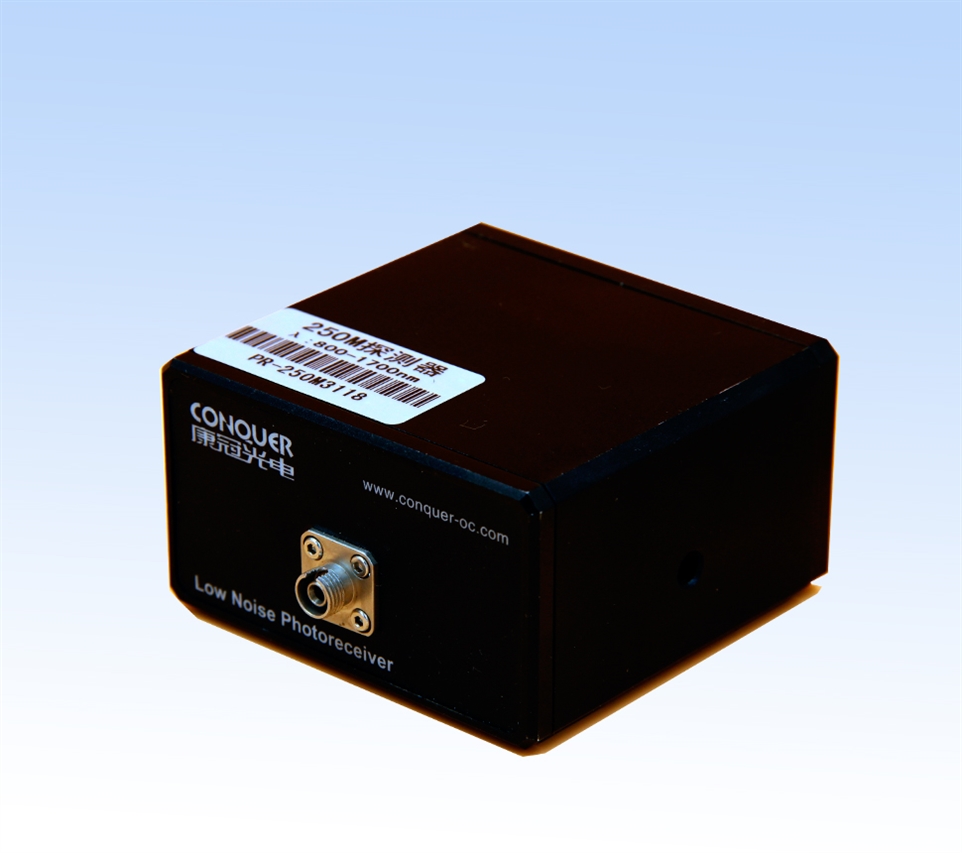1. Introduction
A photodetector is a device that converts light signals into electrical signals. In a semiconductor photodetector, the photo-generated carrier excited by the incident photon enters the external circuit under the applied bias voltage and forms a measurable photocurrent. Even at the maximum responsiveness, a PIN photodiode can only produce a pair of electron-hole pairs at most, which is a device without internal gain. For greater responsiveness, an avalanche photodiode (APD) can be used. The amplification effect of APD on photocurrent is based on the ionization collision effect. Under certain conditions, the accelerated electrons and holes can obtain enough energy to collide with the lattice to produce a new pair of electron-hole pairs. This process is a chain reaction, so that the pair of electron-hole pairs generated by light absorption can produce a large number of electron-hole pairs and form a large secondary photocurrent. Therefore, APD has high responsiveness and internal gain, which improves the signal-to-noise ratio of the device. APD will mainly be used in long-distance or smaller optical fiber communication systems with other limitations on the received optical power. At present, many optical device experts are very optimistic about the prospects of APD, and believe that the research of APD is necessary to enhance the international competitiveness of related fields.
2. Technical development of avalanche photodetector (APD photodetector)
2.1 Materials
(1)Si photodetector
Si material technology is a mature technology that is widely used in the field of microelectronics, but it is not suitable for the preparation of devices in the wavelength range of 1.31mm and 1.55mm that are generally accepted in the field of optical communication.
(2)Ge
Although the spectral response of Ge APD is suitable for the requirements of low loss and low dispersion in optical fiber transmission, there are great difficulties in the preparation process. In addition, Ge’s electron and hole ionization rate ratio is close to () 1, so it is difficult to prepare high-performance APD devices.
(3)In0.53Ga0.47As/InP
It is an effective method to select In0.53Ga0.47As as the light absorption layer of APD and InP as the multiplier layer. The absorption peak of In0.53Ga0.47As material is 1.65mm, 1.31mm,1.55mm wavelength is about 104cm-1 high absorption coefficient, which is the preferred material for the absorption layer of light detector at present.
(4)InGaAs photodetector/In photodetector
By selecting InGaAsP as the light absorbing layer and InP as the multiplier layer, APD with a response wavelength of 1-1.4mm, high quantum efficiency, low dark current and high avalanche gain can be prepared. By selecting different alloy components, the best performance for specific wavelengths is achieved.
(5)InGaAs/InAlAs
In0.52Al0.48As material has a band gap (1.47eV) and does not absorb at the wavelength range of 1.55mm. There is evidence that thin In0.52Al0.48As epitaxial layer can obtain better gain characteristics than InP as a multiplicator layer under the condition of pure electron injection.
(6)InGaAs/InGaAs (P) /InAlAs and InGaAs/In (Al) GaAs/InAlAs
The impact ionization rate of materials is an important factor affecting the performance of APD. The results show that the collision ionization rate of the multiplier layer can be improved by introducing InGaAs (P) /InAlAs and In (Al) GaAs/InAlAs superlattice structures. By using the superlattice structure, the band engineering can artificially control the asymmetric band edge discontinuity between the conduction band and the valence band values, and ensure that the conduction band discontinuity is much larger than the valence band discontinuity (ΔEc>>ΔEv). Compared with InGaAs bulk materials, InGaAs/InAlAs quantum well electron ionization rate (a) is significantly increased, and electrons and holes gain extra energy. Due to ΔEc>>ΔEv, it can be expected that the energy gained by electrons increases the electron ionization rate much more than the contribution of hole energy to hole ionization rate (b). The ratio (k) of electron ionization rate to hole ionization rate increases. Therefore, high gain-bandwidth product (GBW) and low noise performance can be obtained by applying superlattice structures. However, this InGaAs/InAlAs quantum well structure APD, which can increase the k value, is difficult to apply to optical receivers. This is because the multiplier factor that affects the maximum responsiveness is limited by the dark current, not the multiplier noise. In this structure, the dark current is mainly caused by the tunneling effect of the InGaAs well layer with a narrow band gap, so the introduction of a wide-band gap quaternary alloy, such as InGaAsP or InAlGaAs, instead of InGaAs as the well layer of the quantum well structure can suppress the dark current.





















